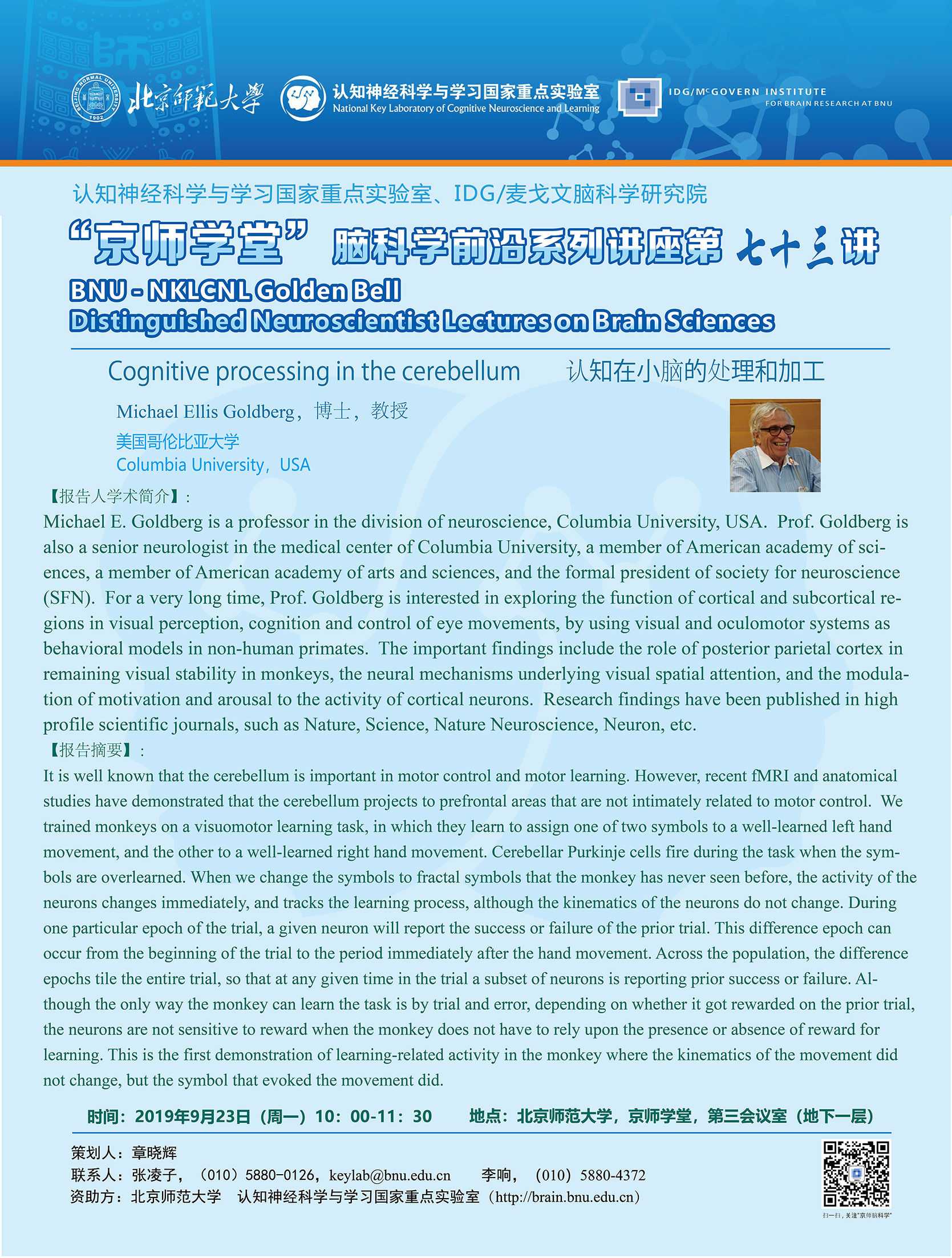认知在小脑的处理和加工
Cognitive processing in the cerebellum
报告时间:9月23日上午10:00-11:30
报告地点:京师学堂第三会议室
报告人简介:
Michael E. Goldberg is a professor in the division of neuroscience, Columbia University, USA. Prof. Goldberg is also a senior neurologist in the medical center of Columbia University, a member of American academy of sciences, a member of American academy of arts and sciences, and the formal president of society for neuroscience (SFN). For a very long time, Prof. Goldberg is interested in exploring the function of cortical and subcortical regions in visual perception, cognition and control of eye movements, by using visual and oculomotor systems as behavioral models in non-human primates. The important findings include the role of posterior parietal cortex in remaining visual stability in monkeys, the neural mechanisms underlying visual spatial attention, and the modulation of motivation and arousal to the activity of cortical neurons. Research findings have been published in high profile scientific journals, such as Nature, Science, Nature Neuroscience, Neuron, etc.
报告摘要:
It is well known that the cerebellum is important in motor control and motor learning. However, recent fMRI and anatomical studies have demonstrated that the cerebellum projects to prefrontal areas that are not intimately related to motor control. We trained monkeys on a visuomotor learning task, in which they learn to assign one of two symbols to a well-learned left hand movement, and the other to a well-learned right hand movement. Cerebellar Purkinje cells fire during the task when the symbols are overlearned. When we change the symbols to fractal symbols that the monkey has never seen before, the activity of the neurons changes immediately, and tracks the learning process, although the kinematics of the neurons do not change. During one particular epoch of the trial, a given neuron will report the success or failure of the prior trial. This difference epoch can occur from the beginning of the trial to the period immediately after the hand movement. Across the population, the difference epochs tile the entire trial, so that at any given time in the trial a subset of neurons is reporting prior success or failure. Although the only way the monkey can learn the task is by trial and error, depending on whether it got rewarded on the prior trial, the neurons are not sensitive to reward when the monkey does not have to rely upon the presence or absence of reward for learning. This is the first demonstration of learning-related activity in the monkey where the kinematics of the movement did not change, but the symbol that evoked the movement did.
